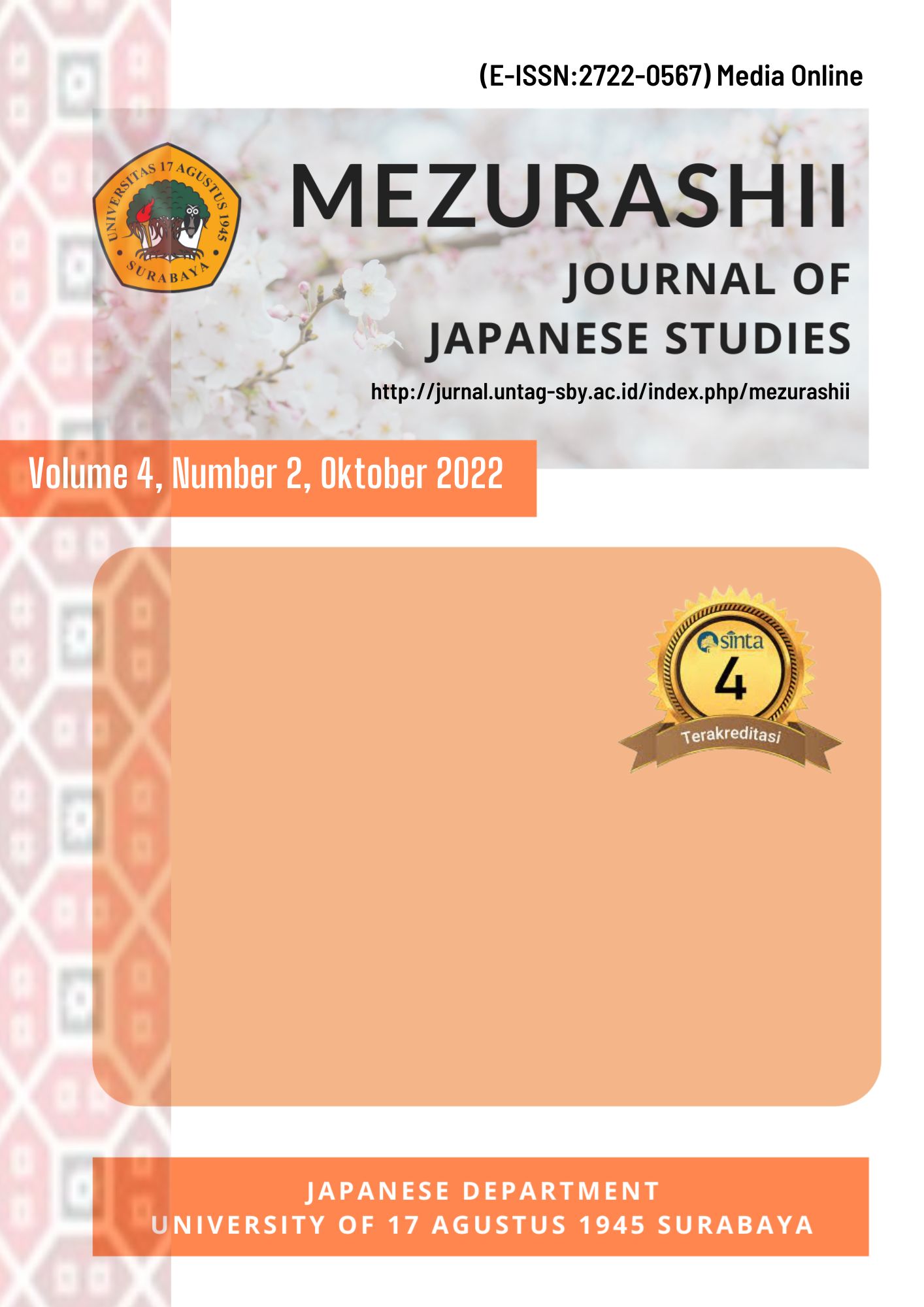Budaya Konsumtif Makanan Jepang Onigiri dalam Kehidupan Remaja Di Kota Gresik
DOI:
https://doi.org/10.30996/mezurashii.v4i2.8139Abstract
ABSTRACT
The development of an increasingly advanced era with technology is developing rapidly, and facilitates the dissemination of information that makes foreign or foreign cultures enter a country. Especially the influence of foreign culture on food has changed the tastes of the Indonesian people. Like fast food, types of food that are easy to pack and practical. One of the practical foods in making or eating it is Onigiri. The method used in this research is a quantitative descriptive method. A method that aims to create an description of a research that uses numbers, starting from data collection, interpretation of the data as well as the appearance and results. Sample collection was carried out by distributing questionnaires in the form of online links to 100 adolescent respondents regarding the consumer Onigiri food in the city of Gresik. In this study using the Likert scale analysis model and spearman rank correlation. The results obtained from the Likert scale data, the most preferred type of onigiri flavor is "Onigiri Hot Tuna", followed by "Onigiri Chicken Mayo", then "Onigiri Chicken Teriyaki" with an interpretation rate of 46.53%, which means that the respondent's interest in onigiri is in the category “No. Like". The results of the Spearman rank test from 1 to 4 from the analysis show that the null hypothesis (Ho) is rejected and the alternative hypothesis (Ha) is accepted that the first question and the second question have a significant correlation, meaning that respondents have tried to eat onigiri.
Keywords: Onigiri, Onigiri Taste, Consumptive Culture
Downloads
Downloads
Published
How to Cite
Issue
Section
License
Authors publishing in the Journal will be asked to sign a Copyright Assignment Form. In signing the form, it is assumed that authors have obtained permission to use any copyrighted or previously published material. All authors must read and agree to the conditions outlined in the form, and must sign the form or agree that the corresponding author can sign on their behalf. Articles cannot be published until a signed form has been received.It is a condition of publication that authors assign copyright or license the publication rights in their articles, including abstracts, to email jurnalmezurashii@untag-sby.ac.id. . This enables us to ensure full copyright protection and to disseminate the article, and of course the Journal to the widest possible readership in print and electronic formats as appropriate.








